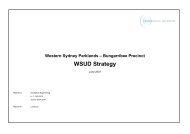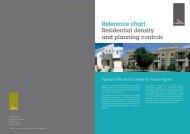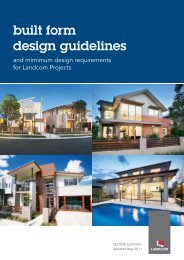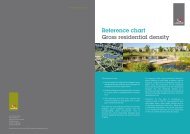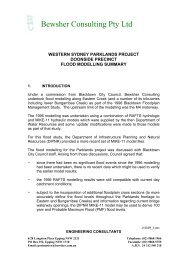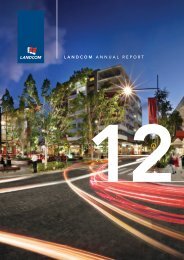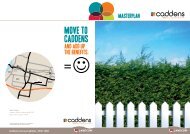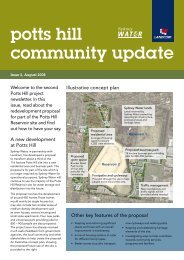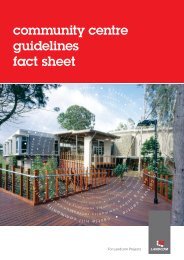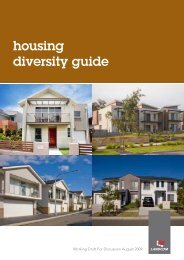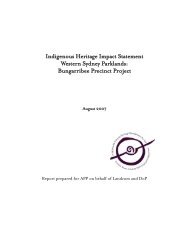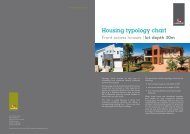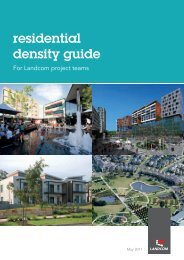Water Sensitive Urban Design
Book 2 | Planning and Management - WSUD
Book 2 | Planning and Management - WSUD
- No tags were found...
Create successful ePaper yourself
Turn your PDF publications into a flip-book with our unique Google optimized e-Paper software.
<strong>Water</strong> <strong>Sensitive</strong> <strong>Urban</strong> <strong>Design</strong><br />
Figure 15 - Examples of matching public open space with stormwater features (Victoria Park, Docklands in Melbourne<br />
and Ascot <strong>Water</strong>s in Perth. Ascot <strong>Water</strong>s images source: www.wsud.org)<br />
5.1 Public Open Space<br />
(POS) Layout<br />
POS areas can<br />
potentially<br />
incorporate<br />
stormwater<br />
conveyance and<br />
treatment systems<br />
as landscape<br />
features within<br />
a multiple use<br />
corridor.<br />
Integration of public open space (POS)<br />
with conservation corridors, stormwater<br />
management systems and recreational<br />
facilities is a fundamental objective<br />
of WSUD. POS areas can potentially<br />
incorporate stormwater conveyance and<br />
treatment systems as landscape features<br />
within a multiple use corridor. This can<br />
provide a recreation focus (such as a<br />
linear park with bike path or an urban<br />
forest) as well as enhancing community<br />
understanding and regard of stormwater<br />
as a valuable resource. The key principles<br />
to be considered in locating POS areas:<br />
••<br />
Align POS along natural drainage lines<br />
••<br />
Protect/enhance areas containing<br />
natural water features (such as creeks<br />
and wetlands) and other environmental<br />
values by locating them within POS<br />
••<br />
Utilise POS to provide links between<br />
public and private areas and community<br />
activity nodes<br />
For water sensitive landscape design the<br />
following natural landscape values should<br />
be considered:<br />
••<br />
Retention of natural features –<br />
watercourses, landforms and other<br />
water features should be retained or<br />
restored<br />
••<br />
Use of indigenous species – existing<br />
native vegetation needs to be retained<br />
or restored. Vegetated links should<br />
be provided with native vegetation on<br />
adjoining land<br />
••<br />
Planting – should be limited to locally<br />
indigenous species (or specifically<br />
appropriate other species) and exclude<br />
groups that can cause weed problems<br />
••<br />
Fauna habitat – provision should be<br />
made for fauna habitat measures such<br />
as wetlands, ponds, shrubs and nest<br />
boxes, and<br />
••<br />
Hydrologic maintenance of natural<br />
regime on native vegetation –<br />
stormwater runoff should be diverted<br />
away from native vegetation to maintain<br />
suitable soil moisture and nutrient<br />
conditions and avoid the spread of<br />
weeds.<br />
30 Book 2 | planning and management



